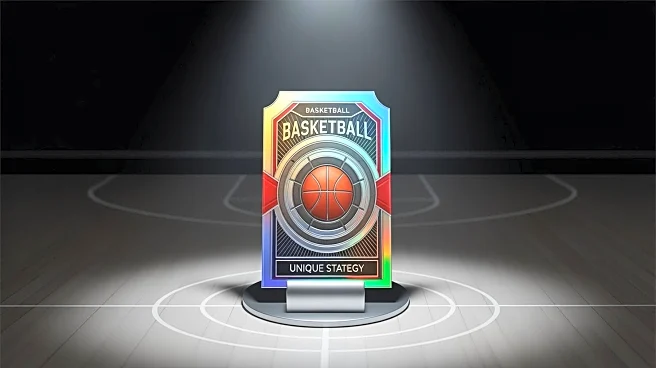What's Happening?
Dallas Mavericks rookie Cooper Flagg made his NBA debut in a game against the San Antonio Spurs, where he recorded 10 points, 10 rebounds, and one steal. During this debut, Flagg wore three different Rookie
Debut Patches on his jerseys. However, only one of these patches will be preserved. Fanatics-owned Topps plans to authenticate and sign this patch, releasing it later as a 1-of-1 Rookie Debut Patch Autograph card. This card is expected to become a highly sought-after collectible, potentially commanding millions on the secondary market. The other two patches were intentionally destroyed to maintain the uniqueness and value of the remaining patch. This strategy aligns with a broader trend in collectibles, where scarcity is engineered to enhance value.
Why It's Important?
The decision to destroy two of the three patches worn by Flagg highlights a growing trend in the collectibles market, where scarcity is deliberately created to increase value. This approach mirrors strategies used in the luxury goods industry, where brands like Louis Vuitton and Burberry have destroyed unsold products to maintain exclusivity and brand value. In the context of sports memorabilia, this move by Topps could set a precedent for future collectibles, emphasizing the importance of rarity and narrative over mere production. Collectors and investors in the sports memorabilia market stand to gain from this strategy, as it could drive up the value of unique items, making them more desirable and potentially more profitable.
What's Next?
As the collectibles market continues to evolve, other companies may adopt similar strategies to enhance the value of their products. The success of the 1-of-1 Rookie Debut Patch Autograph card could lead to more engineered scarcity in sports memorabilia, influencing how items are marketed and sold. Collectors and investors will likely keep a close eye on the market to identify new opportunities for high-value acquisitions. Additionally, this trend could further blur the lines between collectibles, fashion, and art, as industries adopt similar strategies to create value through scarcity.
Beyond the Headlines
The strategy of engineered scarcity raises questions about the ethical implications of destroying products to create value. While it can enhance the desirability of certain items, it also reflects a consumer culture that prioritizes exclusivity and status. This approach may contribute to a broader societal trend where value is increasingly tied to rarity and narrative rather than intrinsic qualities. As the collectibles market continues to grow, stakeholders may need to consider the long-term cultural and economic impacts of these strategies.












